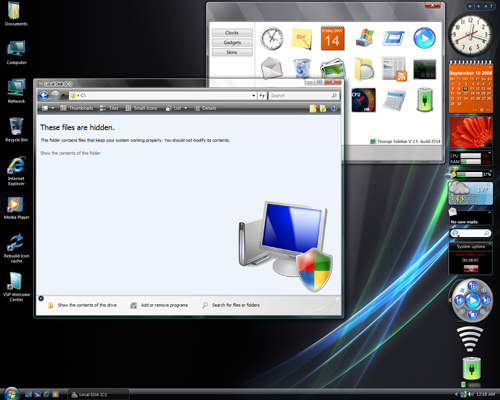Mess 12 Windows Xp Sp1
Hi guys, I have just re-installed my PC with Windows XP sp1. And I want to use msn messenger to chat with my friends, but msn messenger requires sp2. Can I install. Look at most relevant Skype messenger for windows xp sp1 websites out of 1.24 Million at KeyOptimize.com. Skype messenger for windows xp sp1. Last check 12. Right I installed SP1 a while ago and have noticed a very annoying problem. It installed a second MSN messenger. So now I have the most uptodate msn messenger (which. FLgal946 asked on December 12, 2010. Upgrade steps for Win-XP Pro, from SP1 to SP3. 2000 HP desktop, Intel Pentium 4, with Windows 2000.
Do your other executables work properly? I've had instances where other programs have influenced being able to see open programs. For example, MSMIN.exe has oft caused me problems. Make sure absolutely everything in Task Manager is closed that can be closed under 'Processes'. Also, if your XP is not activated, you would have a simliar problem.
If you are using a crack to circumvent registration or just have not activated it yet, this may be the cause. Other than that. I don't know. Lastly, try searching the microsoft knowledge base for something like sp1 will not run.

(In my signature) For example, here is a possible solution I found. Quite a mess! A second-to-last ditch idea.

But perhaps try to 'repair' your XP installation by booting from the CD and following the install process. You probably know the drill. You can also slip-stream SP1 into your Windws XP CD and build a new one. You can upgrade to SP1 from the XP installation, rather than trying to install it from Windows.
If you need more information on slip streaming, I'll be happy to help you out. There's a wealth of info on the internet though. Other than that, waiting for SP2 might be an option as well as formatting (Don't give up yet, though!).
Slipstreamed Windows XP CD Using SP3 Whenever a new version of a service pack for XP is released I always run it through the slipstreaming procedure to see if everything works as expected. Service Pack 3 (SP3) is the latest release so it was time for another round of testing. For those of you that have a copy of SP3 and want to give it a try the procedure I used is presented below. I experienced absolutely no problems with the procedure based on an original Gold Edition XP Professional CD. The slipstreamed CD booted and installed perfectly to a freshly formatted hard drive. In every other slipstreaming tutorial I've done I've always had the 'I experienced absolutely no problems' sentence in the previous paragraph.
It still holds true with SP3 but with a caveat. Ms Office 2007 Utorrent Kickass Search. One of the changes in SP3 involves Windows Product Activation and being able to perform a full, integrated installation of Windows XP SP3 without providing the product key during the installation. This is true, but only if you use Windows XP SP1 or Windows XP SP2 as the basis for the slipstreamed CD. It does not hold true when you use a Gold Edition CD as has always been my practice in previous slipstreaming tutorials. That is not to say you can't use a Gold Edition CD as the basis for a slipstreamed CD.
That is certainly possible, and it does install without problems as far as I can tell, but you will have to enter the product key during the installation procedure rather than have the option to defer entering it until after installation is complete. Important Note: This tutorial was created using Release Candidate 1 for Service Pack 3 for XP This is not the final release version expected to be released in early 2008. I don't expect there will be any substantial changes in the final release version to impact this tutorial, but I strongly suggest you not use this slipstreamed CD in any production or mission critical environment or anywhere you cannot recover from unexpected data loss. Tutorial will be updated after the final SP3 version is released. Building Directories The first step is to build a directory structure to hold the files that will be used in the CD creation process. It's a simple structure, requiring nothing more than a few folders.